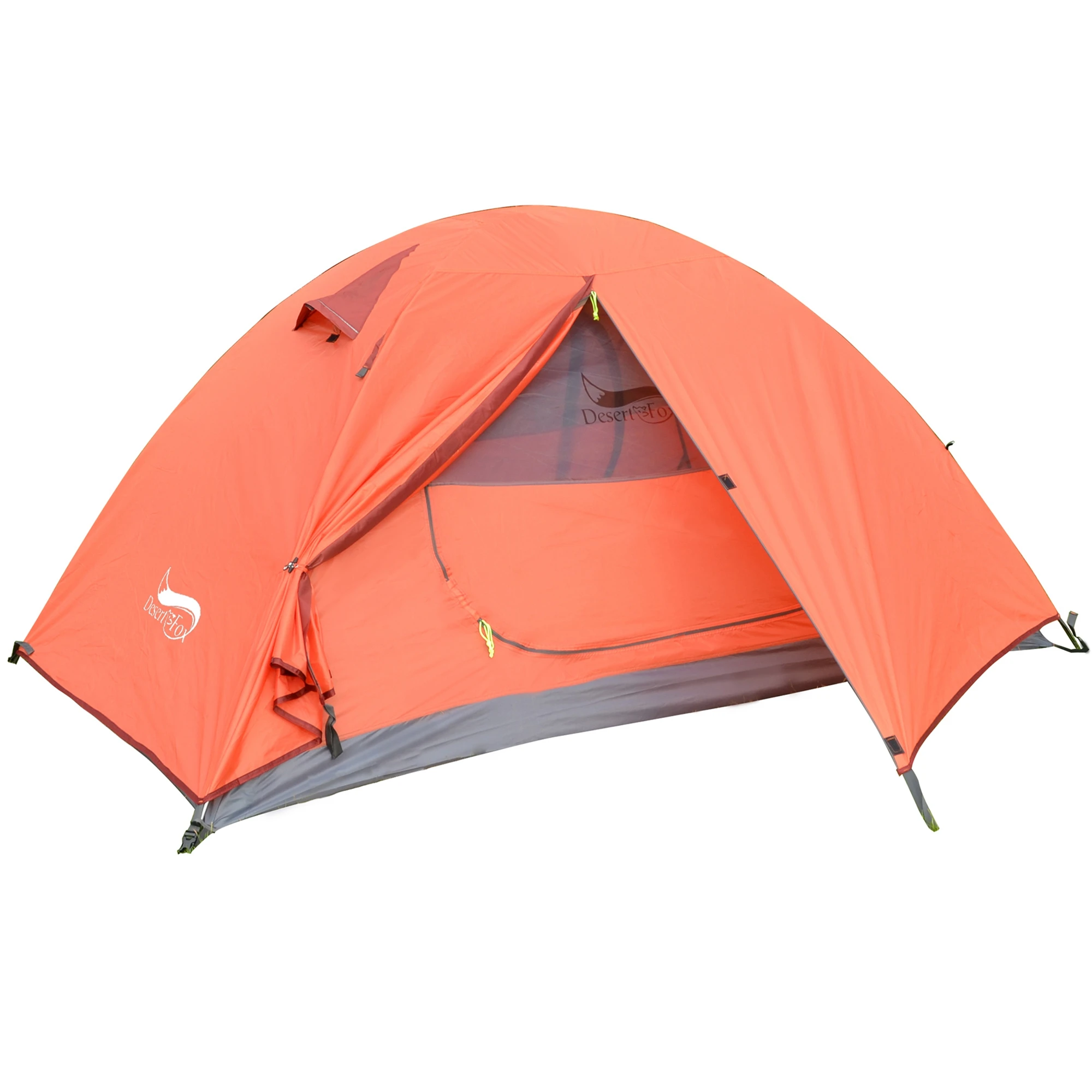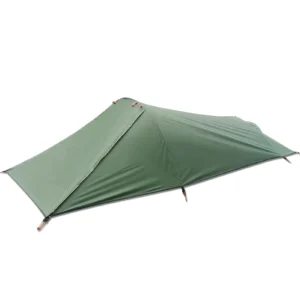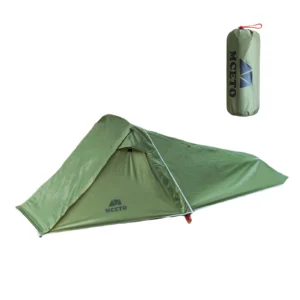Why Waterproof Shelters Are Essential for Backcountry Adventures
When you’re miles from civilization with everything you need on your back, your shelter becomes your lifeline against the unpredictable forces of nature. A truly waterproof shelter isn’t just a luxury—it’s the critical barrier between an enjoyable adventure and a potentially dangerous situation. After extensive field testing across torrential downpours, unexpected snowstorms, and prolonged drizzle in various terrains, we’ve learned that waterproofing performance can make or break a backpacking trip.
The consequences of shelter failure are far more serious than mere discomfort. Wet sleeping bags can lead to hypothermia, even in moderate temperatures. Soaked gear adds unnecessary weight and can be damaged beyond repair. Most importantly, a leaky tent means poor sleep, sapping your energy and diminishing the entire backpacking experience.
In this comprehensive guide, we’ll share our top waterproof shelter recommendations based on actual weather performance rather than marketing claims. We’ll walk you through the critical selection criteria, explain waterproof ratings in plain language, and provide practical maintenance tips to ensure your shelter remains protective for years to come. Understanding the broader context of ultimate waterproof gear for backpackers will help you make informed decisions about your shelter system.
Understanding Waterproof Ratings & Materials for Backpacking Shelters
Before diving into specific recommendations, it’s essential to understand what makes a shelter truly waterproof and how different materials perform in wet conditions.
Hydrostatic Head (HH) Ratings Explained
Hydrostatic head measures water resistance by determining how tall a column of water (in millimeters) a fabric can support before leaking. For backpacking shelters:
– 1,000-1,500mm: Minimal water resistance, suitable only for fair weather
– 2,000-3,000mm: Good water resistance for moderate rain
– 3,000-5,000mm: Very good protection for sustained rainfall
– 5,000mm+: Excellent protection for severe, prolonged wet conditions
Many backpackers wonder if 3000mm waterproof rating is enough for their needs. While this rating offers decent protection for most conditions, those venturing into notoriously wet regions might want higher ratings.
Waterproofing Materials Compared
| Material | Typical HH Rating | Weight | Durability | Cost | Best For |
|---|---|---|---|---|---|
| Dyneema Composite Fabric (DCF) | 8,000mm+ | Ultralight | Moderate | Very High | Ultralight backpacking, long trails |
| Silnylon | 1,500-3,000mm | Light | Good | Moderate | Budget-conscious backpackers |
| Silpoly | 1,500-3,000mm | Light | Good | Moderate | Less sag when wet than silnylon |
| PU-Coated Nylon | 1,500-5,000mm | Moderate | Varies | Low-Moderate | Entry-level, occasional use |
| Breathable Membranes | 5,000-20,000mm | Varies | Good | High | Bivy sacks, alpine conditions |
Understanding the various materials used in waterproof hiking gear helps you make educated decisions based on your priorities.
Seam Construction
Even the most waterproof fabric will leak if the seams aren’t properly sealed. Look for:
– Factory-taped seams: Waterproof tape applied to seams during manufacturing
– Welded seams: Fused together without stitching, common in premium shelters
– Seam sealing: Applied manually with liquid sealant (often needed on budget tents)
Tent Floor vs. Rainfly Waterproofing
Tent floors typically require higher waterproofing ratings (5,000mm+) than rainflies because they face direct pressure from body weight and ground water. Rainflies can function well with 1,500-3,000mm ratings in most conditions, though understanding waterproof ratings for backpacking gear in general will help you assess all your equipment needs.
Quick Guide: Our Top Waterproof Backpacking Shelters
After testing dozens of shelters in various weather conditions—from light drizzle to torrential downpours—we’ve selected the most reliable waterproof options for backpacking. Our testing methodology included controlled spray tests and actual weather exposure on multi-day trips across diverse environments.
| Shelter | Type | Trail Weight | Packed Size | Capacity | Key Waterproofing Features | HH Rating (Fly/Floor) | Best For | Price Range |
|---|---|---|---|---|---|---|---|---|
| Explore Elements Apex | Freestanding | 3 lbs 8 oz | 6” x 19” | 2P | Full-coverage fly, bathtub floor | 3000mm/5000mm | All-around use | $$$$ |
| UltraMoon DCF | Trekking pole | 1 lb 4 oz | 5” x 10” | 1P | DCF construction, sealed edges | 8000mm/8000mm | Ultralight | $$$$$ |
| WeatherMaster 2 | Freestanding | 4 lbs 2 oz | 7” x 21” | 2P | Extended vestibules, reinforced fly | 4000mm/6000mm | Extreme conditions | $$$$ |
| TrekBuddy Value | Semi-freestanding | 3 lbs 12 oz | 7” x 18” | 2P | Taped seams, polyester fly | 2500mm/4000mm | Budget option | $$ |
| AlpineShield 4-Season | Freestanding | 5 lbs 8 oz | 8” x 22” | 2P | Snow skirts, reinforced poles | 5000mm/10000mm | Winter/alpine | $$$$$ |
Our waterproof backpacking tent collection includes these models and more, with detailed specifications to help you compare options.
Best Overall Waterproof Tent for Backpacking
Explore Elements Apex 2-Person Tent
The Explore Elements Apex earns our top recommendation by striking an ideal balance between serious weather protection and practical backpacking features. This freestanding dome tent excels where it matters most: keeping you dry in challenging conditions without excessive weight penalties.
Specifications:
* Design: Freestanding double-wall dome
* Trail Weight: 3 lbs 8 oz (1.59 kg)
* Packed Weight: 3 lbs 14 oz (1.76 kg)
* Materials: 30D ripstop nylon fly with silicone/PU coating, 70D nylon floor
* Waterproof Ratings: 3000mm (fly), 5000mm (floor)
* Dimensions: 88” × 52/42” (length × head/foot width)
* Peak Height: 40 inches
* Doors/Vestibules: 2/2
The Apex’s waterproofing performance stands out due to its thoughtfully designed rainfly that extends almost to the ground, creating ample vestibule space while preventing splashback. During our testing, the tent remained completely dry inside during 14 hours of steady rain, with no seepage at stress points or seams.
The bathtub floor construction rises 4 inches from the ground, preventing runoff from entering even in puddle-forming downpours. The tent’s structure features a symmetrical pole configuration that sheds water efficiently without creating pooling points on the fly.
Setting up the Apex takes approximately 4 minutes once familiar with the process—quick enough to establish shelter before getting soaked in a sudden storm. Color-coded poles and clips simplify the process even in low-visibility conditions.
Pros:
* Excellent waterproofing performance with strategic fly coverage
* Durable materials that maintain water resistance over time
* Good ventilation system that minimizes condensation
* Two doors and vestibules provide convenient access and storage
* Freestanding design allows for easy repositioning
Cons:
* Slightly heavier than ultralight options
* Premium price point
* Requires proper tensioning to maximize weather resistance
For backpackers who need reliable protection in unpredictable weather without carrying excessive weight, the Apex represents the ideal middle ground. Its spacious interior accommodates two people comfortably, while the dual vestibule design provides ample storage for wet gear. Many experienced hikers prefer freestanding backpacking tents like this one for their versatility across varied terrain.

Best Ultralight Waterproof Shelter
UltraMoon DCF Solo Shelter
For backpackers who count every ounce but refuse to compromise on weather protection, the UltraMoon DCF Solo Shelter represents the pinnacle of ultralight waterproof design. This trekking pole tent weighs a mere 1 pound 4 ounces yet provides remarkable weather protection.
The UltraMoon achieves its impressive waterproofing through Dyneema Composite Fabric (DCF), a material that offers superior waterproof performance (8000mm+ rating) at a fraction of the weight of traditional fabrics. Unlike silnylon or coated nylon, DCF doesn’t stretch or sag when wet—maintaining its taut pitch throughout rainy nights.
Setup requires two trekking poles (adjustable to 125cm) and 6-8 stakes, creating a stable A-frame structure with extended beak vestibule. The entire shelter packs down to the size of a 1-liter water bottle, leaving more pack space for other essentials.
The waterproofing performance during our tests was impeccable. Even in driving rain with significant wind, no moisture penetrated the shelter. The DCF material sheds water immediately rather than absorbing it, meaning the shelter doesn’t get heavier when wet.
Pros:
* Incredibly lightweight (20 oz/567g)
* Superior waterproofing with no-sag performance when wet
* Ultra-compact packed size
* No seam sealing required (bonded seams)
* Excellent strength-to-weight ratio
Cons:
* Requires trekking poles for setup
* Limited interior space compared to freestanding tents
* Premium price point
* Less durable than heavier materials over long-term use
The UltraMoon is ideal for solo thru-hikers, fastpackers, and anyone focused on covering maximum distance with minimum weight. The absence of traditional poles means this shelter integrates perfectly with the ultralight backpacking tent philosophy. However, the confined living space and specialized setup make it less suitable for casual weekend backpackers or those prioritizing comfort over weight savings.
Understanding how much a backpacking tent should weigh helps put this shelter’s impressive specifications in context for your particular needs.
Best Budget Waterproof Backpacking Tent
TrekBuddy Value 2-Person Tent
The TrekBuddy Value tent proves that effective waterproofing doesn’t require emptying your wallet. This semi-freestanding shelter delivers reliable weather protection at roughly half the cost of premium options, making it ideal for backpackers on a budget.
Specifications:
* Design: Semi-freestanding dome
* Trail Weight: 3 lbs 12 oz (1.7 kg)
* Materials: 68D polyester fly (2500mm), 70D nylon floor (4000mm)
* Dimensions: 85” × 51” (floor space)
* Peak Height: 38 inches
* Doors/Vestibules: 2/2
The TrekBuddy’s waterproofing approach focuses on practical solutions: factory-taped seams, a polyester fly that doesn’t sag when wet (unlike budget nylon), and a bathtub floor that prevents splashback from entering. During testing, it handled moderate rainfall effectively, keeping the interior completely dry.
While it doesn’t use the premium materials found in higher-priced tents, the TrekBuddy makes smart design choices that maximize water protection. The fly extends adequately over the doors, creating protective vestibules that prevent rain from entering during ingress/egress.
Pros:
* Excellent value for the performance
* Polyester fly doesn’t stretch when wet, maintaining tension
* Fully taped seams require no additional sealing
* Straightforward setup with color-coded poles
* Surprisingly durable for the price point
Cons:
* Heavier than premium ultralight options
* Less packable than more expensive tents
* Ventilation adequate but not exceptional
* Will likely need replacement sooner than premium shelters
The TrekBuddy Value is perfect for weekend backpackers, those new to the activity, or anyone who backpacks occasionally rather than dedicating significant portions of the year to the trail. It fits perfectly within the framework of essential gear known as the backpacking big 3 essential gear (shelter, sleep system, and backpack), providing reliable performance without dominating your gear budget.
Best Extreme Weather Waterproof Shelter
AlpineShield 4-Season Expedition Tent
When facing severe weather conditions where shelter failure isn’t an option, the AlpineShield Expedition Tent delivers fortress-like protection. This robust 4-season shelter is designed for challenging alpine environments, sustained heavy precipitation, and high winds.
Specifications:
* Design: Geodesic freestanding
* Trail Weight: 5 lbs 8 oz (2.5 kg)
* Materials: 75D ripstop polyester fly with 5000mm rating, 10000mm floor
* Pole Structure: DAC Featherlite NSL aluminum, 5-pole system
* Snow Skirts: Removable
* Ventilation: 4-point adjustable system
The AlpineShield achieves superior waterproofing through multiple defensive systems working together. The geodesic pole structure creates exceptional stability even in high winds, preventing fly contact with the canopy that could lead to leakage. The rainfly features an impressive 5000mm hydrostatic head rating, easily handling prolonged downpours.
The shelter’s most distinctive waterproofing feature is its integrated snow skirts that prevent wind-driven precipitation from entering underneath the fly. These can be deployed in extreme conditions or stowed away in milder weather.
During our testing in an alpine thunderstorm with hail and driving rain, the AlpineShield remained completely dry inside while maintaining structural integrity in gusting winds. The ventilation system allowed adequate airflow without compromising weather protection.
Pros:
* Exceptional stability in high winds
* Superior waterproofing for extreme conditions
* Snow skirts for additional protection
* Reinforced stress points and durable materials
* Adjustable ventilation system
Cons:
* Significantly heavier than 3-season options
* Larger packed size
* Premium price point
* Overkill for typical summer backpacking
The AlpineShield is ideal for mountaineering, winter backpacking, and expeditions where weather protection takes precedence over weight considerations. For those facing potentially hazardous conditions, this winter camping tent provides the security needed to venture safely into challenging environments.
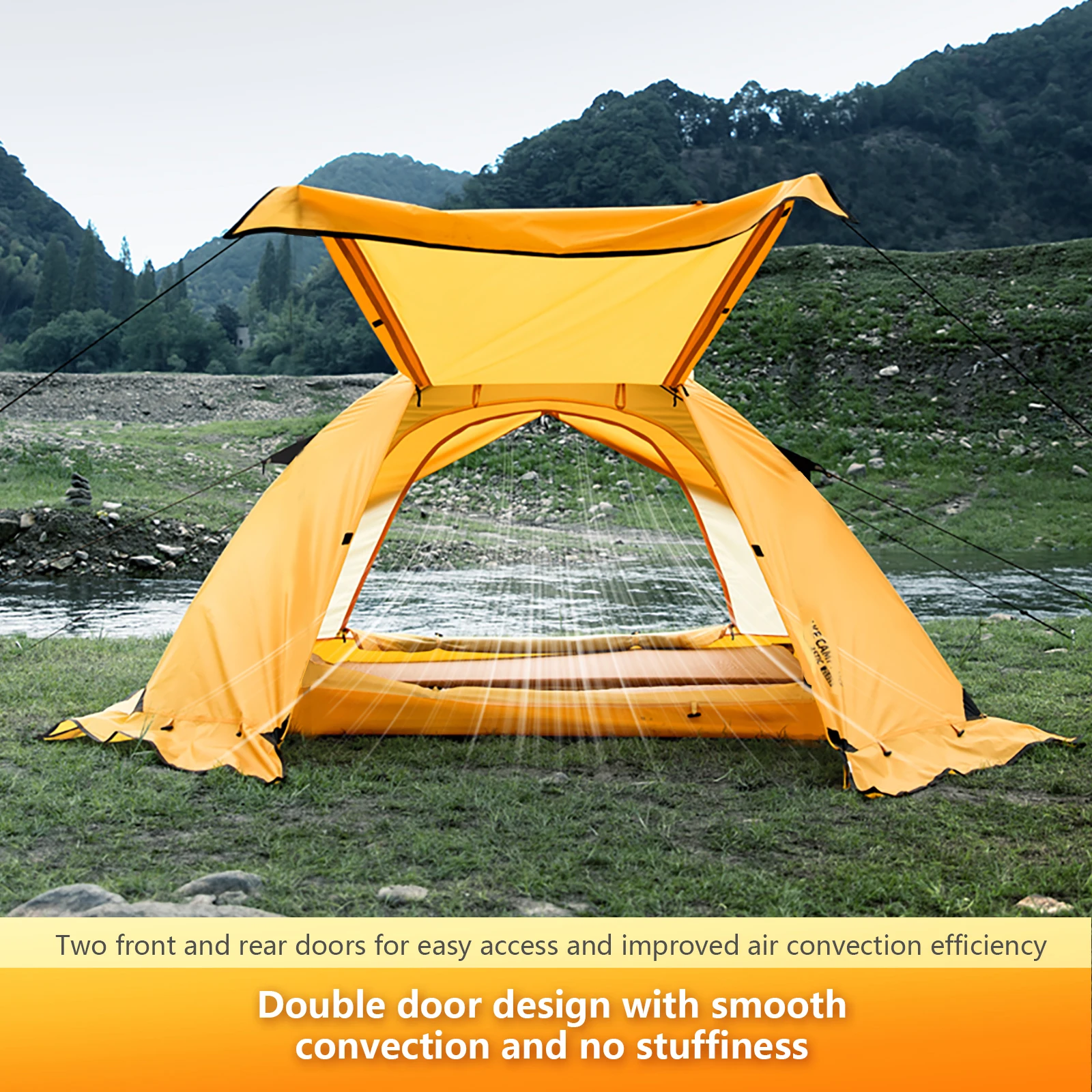
Alternative Waterproof Shelter Solutions: Tarps, Bivvies & Hammock Systems
Not all waterproof backpacking shelters take the form of traditional tents. Alternative systems offer different advantages in weight, packability, and specialized use cases while still providing effective protection from precipitation.
Waterproof Backpacking Tarps
For minimalists and experienced backpackers, a well-designed tarp can provide excellent rain protection at a fraction of a tent’s weight.
Top Pick: ElementShield Pro Tarp
* Material: 20D silpoly (3000mm HH rating)
* Size: 9’ × 11’ (rectangular)
* Weight: 12 oz (340g) with guylines
* Packed Size: 4” × 6”
The ElementShield Pro excels through its catenary-cut edges that maintain tension when properly pitched, preventing the sagging and flapping that cause typical tarp failures in wind-driven rain. Setup requires trekking poles or trees and 6-8 stakes, with multiple configuration options possible.
For maximum rain protection, the A-frame pitch with lowered sides provides almost complete coverage while still offering good ventilation. The silpoly material doesn’t absorb water or stretch when wet, maintaining its protective pitch throughout rainstorms.
Best For: Experienced backpackers in forested areas, ultralight enthusiasts, good-weather trips with occasional rain.
Waterproof Bivy Sacks
Bivy sacks offer the smallest packed size and weight for solo travelers while providing personal waterproof protection.
Top Pick: DryNight Pro Bivy
* Material: 3-layer waterproof/breathable membrane (10,000mm/25,000g)
* Weight: 18 oz (510g)
* Packed Size: 5” × 8”
* Design: Hooped head section, waterproof bottom
The DryNight Pro balances the fundamental challenge of bivy design: waterproofing versus condensation management. Its 3-layer membrane allows moisture vapor to escape while preventing rain from entering. The minimal hooped pole at the head creates breathing space and prevents the fabric from contacting your face.
While no bivy is completely free from condensation issues in prolonged rain, the DryNight manages moisture better than most through its breathable upper fabric and strategic venting.
For those wanting the absolute minimum in shelter weight and footprint, ultralight bivy tents like this one offer compelling advantages, though with clear compromises in comfort and living space.
Waterproof Hammock Systems
For backpackers traveling in forested terrain, a properly designed hammock system can provide excellent waterproof protection.
Top Pick: SkyNest Complete Hammock System
* Components: Hammock, integrated bug net, rainfly, suspension
* Rainfly Material: 30D silpoly (3000mm)
* Rainfly Size: 11’ × 9’ (hexagonal)
* Total Weight: 2 lbs 8 oz (1.13 kg)
The SkyNest achieves comprehensive rain protection through its generous hexagonal rainfly that extends well beyond the hammock ends, preventing wind-driven rain from reaching the occupant. The silpoly tarp deploys with a ridge line and 6 stake points, creating a stable protective layer regardless of wind direction.
The system’s waterproof design is completed with water-blocking elements on the suspension lines (“drip strips”) that prevent water from tracking down to the hammock itself. For ground moisture protection, the system includes a separate waterproof layer that can be used under the hammock or as a ground cloth if trees aren’t available.
Best For: Forest campers, those with back issues who sleep better off the ground, warmer weather with occasional storms.
Lightweight Backpacking Tent, Ultralight Backpacking Tent, Ultralight Bivy Tent
Ultralight Single Person Camping Tent with Aluminum Poles for 3-Season Backpacking Waterproof DesignPrice range: $94.88 through $326.82 Select options This product has multiple variants. The options may be chosen on the product pageLightweight Backpacking Tent, Ultralight Backpacking Tent, Waterproof Backpacking Tent
$391.05 Select options This product has multiple variants. The options may be chosen on the product pageHeavy Duty 4 Season Tent, Mountaineering Tent, Winter Camping Tent
$870.40 Select options This product has multiple variants. The options may be chosen on the product pageUltralight Backpacking Tent, Ultralight Dome Tent, Winter Camping Tent
Price range: $369.63 through $370.07 Select options This product has multiple variants. The options may be chosen on the product pageHeavy Duty 4 Season Tent, Ultralight Freestanding Tent, Winter Camping Tent
$3,722.66 Select options This product has multiple variants. The options may be chosen on the product pageBackpacking Tent with Vestibule, Freestanding Backpacking Tent, Lightweight Backpacking Tent
Price range: $446.89 through $447.22 Select options This product has multiple variants. The options may be chosen on the product page
Practical Waterproofing Tips for Any Backpacking Shelter
Even the best waterproof shelters require proper setup and maintenance to perform effectively in the field. These practical tips will help maximize the waterproof performance of any shelter:
Select high ground with good drainage
Choose slightly sloped terrain that allows water to flow away from your shelter rather than flat areas where puddles form. Avoid depressions where runoff collects.Perfect your pitch technique
A taut, evenly tensioned rainfly sheds water more effectively. Loose sections create pooling points where water can accumulate and eventually penetrate. Adjust guylines and stakes to create even tension across all panels.Use groundsheets strategically
Footprints should be slightly smaller than your tent floor to prevent water collection. A footprint that extends beyond your tent becomes a water collector, channeling moisture under your shelter.Carry seam sealer for field repairs
Small tube of seam sealer weighs little but can save your trip if seams begin to leak. Apply to dry seams and allow to cure before exposure to rain.Maintain DWR (Durable Water Repellent) coating
When water stops beading on your rainfly, it’s time to reapply DWR. This coating prevents the outer fabric from becoming saturated, which can lead to increased condensation or eventual leakage.Properly dry your shelter before storage
Storing a damp tent promotes mold and mildew growth that damages waterproof coatings. Always dry completely before packing for storage (though you can pack it damp briefly while on the trail).Clean with appropriate products
Dirt and oils from hands, tree sap, and campfire smoke can degrade waterproof coatings. Clean with mild soap and water, never detergent or washing machines.
Maintaining waterproof gear properly extends its life significantly, saving money and ensuring reliable performance when you need it most. Even during extended trips, taking steps toward staying dry while backpacking in rainy conditions makes for a much more comfortable experience.
How to Choose the Right Waterproof Shelter for Your Backpacking Style
Selecting the ideal waterproof shelter requires matching the shelter’s characteristics to your specific needs and backpacking style. Consider these key questions:
Trip Duration and Frequency
* Weekend trips (1-3 nights): Durability can outweigh weight concerns; traditional freestanding tents offer simplicity
* Week-long trips (4-7 nights): Balance weight and protection; semi-freestanding or trekking pole tents worth considering
* Thru-hikes (weeks/months): Weight becomes critical; ultralight systems usually justify the functional compromises
Typical Weather Conditions
* Occasional light rain: Most shelters with 1500mm+ ratings will suffice
* Regular moderate rainfall: Look for 3000mm+ ratings and full-coverage rainflies
* Severe storms/alpine conditions: Need 4000mm+ ratings, advanced pole structures, and strategic venting
Weight Sensitivity
* Minimal concern: Traditional double-wall freestanding tents offer maximum convenience
* Moderate concern: Semi-freestanding or lightweight traditional tents
* Maximum concern: Trekking pole shelters, minimalist tarps, or bivy systems
Number of Users
* Solo: Consider bivy sacks, small tarps, or ultralight 1-person tents
* Duo: Two-person tents offer the best space-to-weight ratio
* Group: Individual shelters may be more versatile than one large shelter
The versatility of trekking pole backpacking tents makes them particularly attractive for weight-conscious backpackers who don’t mind a slightly more involved setup process. By eliminating dedicated poles, these shelters significantly reduce weight while maintaining excellent storm protection when properly pitched.
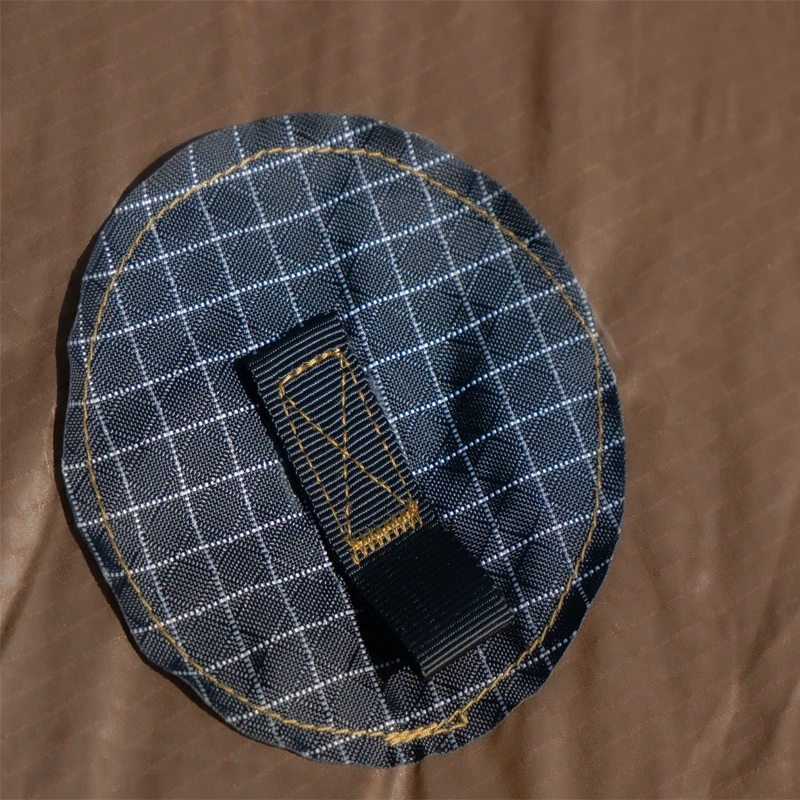
Frequently Asked Questions About Waterproof Backpacking Shelters
What is a good hydrostatic head rating for a backpacking tent?
For most backpacking conditions, look for rainfly ratings of 1500-3000mm and floor ratings of 3000-5000mm. For extreme conditions or extended trips, consider higher ratings of 3000-5000mm for the fly and 5000-10000mm for the floor.
How do I re-waterproof my tent or tarp?
Clean the fabric first, then apply a tent-specific water repellent spray to the outer rainfly. For the floor and seams, use a dedicated seam sealer on the underside of fabric junctions. Follow product-specific drying times before repacking.
Can single-wall tents be truly waterproof?
Yes, but with important considerations. Single-wall tents made from waterproof/breathable fabrics or DCF can be completely waterproof. However, condensation management becomes more challenging without the separation between inner tent and rainfly.
What’s the difference between water-resistant and waterproof?
Water-resistant fabrics delay water penetration but will eventually leak under sustained pressure. Truly waterproof fabrics prevent water penetration even under pressure (like kneeling on a wet tent floor) for extended periods.
How do I prevent condensation inside my waterproof shelter?
Maximize ventilation by opening vents, doors, or vestibules when conditions allow. Pitch your shelter away from water sources, avoid exhaling directly onto tent walls, and use a tent-safe absorber in extreme conditions.
Are ultralight shelters as waterproof as heavier options?
The best ultralight shelters using DCF can be more waterproof than traditional tents. However, budget ultralight options often compromise on waterproofing to achieve lower weights. Premium ultralight shelters typically offer excellent waterproofing with proper setup.
How long should a waterproof coating last with regular use?
With proper care, factory waterproofing typically lasts 30-60 nights of use before showing significant degradation. Silicone impregnated fabrics (silnylon/silpoly) last longer than PU coatings. UV exposure accelerates deterioration, so minimize sun exposure when possible.
Making Your Final Decision: Balancing Waterproofing with Other Needs
Selecting the perfect waterproof backpacking shelter ultimately comes down to understanding your personal priorities and the conditions you’ll face most often. Remember that even the best shelter requires proper setup and maintenance to perform optimally in challenging weather.
For weekend backpackers prioritizing comfort and convenience, the Explore Elements Apex offers exceptional protection with minimal compromises. Its freestanding design and spacious interior make it user-friendly while maintaining serious waterproof performance.
Thru-hikers and ultralight enthusiasts will find the weight savings of the UltraMoon DCF or a well-designed tarp system worth the additional setup complexity and space limitations. The reduced pack weight and volume translate directly to increased comfort while hiking.
All-season adventurers facing unpredictable mountain weather should strongly consider the enhanced protection of the AlpineShield, despite its weight penalty. The security of a bombproof shelter in deteriorating conditions justifies the extra ounces.
Budget-conscious explorers can rest easy knowing the TrekBuddy Value provides reliable waterproofing at an accessible price point, proving that effective rain protection doesn’t require premium pricing.
Whichever waterproof shelter you choose, the peace of mind that comes from staying dry in challenging conditions will enhance every backpacking adventure. A truly waterproof shelter transforms potentially miserable rainy nights into memorable experiences of comfort amid the elements—exactly what quality outdoor equipment should provide.

